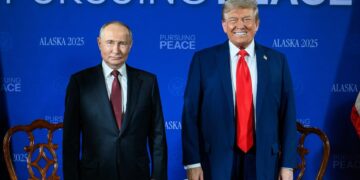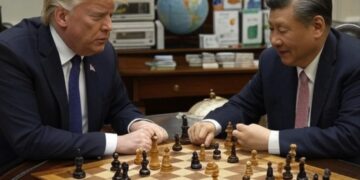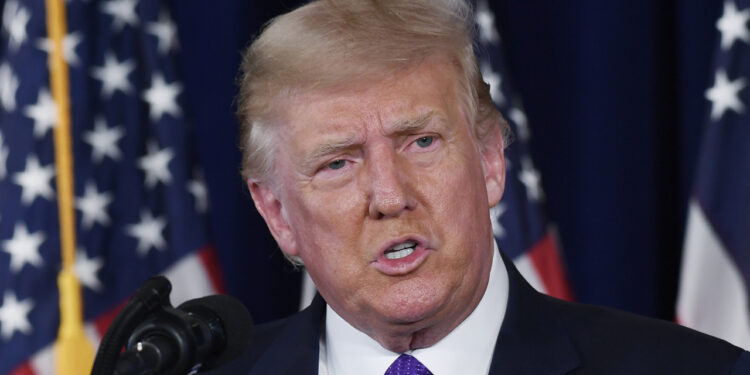Three months ago, President Donald Trump, flanked by Health and Human Services Secretary Robert F. Kennedy Jr., signed a historic executive order on May 12, 2025, promising to slash U.S. prescription drug prices by up to 90% by aligning them with the lowest prices paid in other developed nations. The move, dubbed the “most favored nation” pricing policy, was hailed as a seismic blow to Big Pharma’s decades-long practice of charging Americans—4% of the global population—prices that generate two-thirds of their global profits. With a 30-day deadline for drugmakers to comply voluntarily, the nation awaited a healthcare revolution. But as the dust settles, has the promise of lower drug prices fizzled out?
A Bold Promise Under Fire
The executive order, signed in the Roosevelt Room with fanfare, directed the Department of Health and Human Services (HHS) to set price targets within 30 days, compelling drugmakers to match the lowest prices offered in countries like Sweden or Australia. A breast cancer drug costing $16,000 in the U.S. but $1,600 in Sweden, or an asthma inhaler priced at $500 here but $40 in the UK, exemplified the stark disparities Trump vowed to end. The order also threatened trade leverage, including tariffs, and potential drug importation programs if companies didn’t comply. President Trump estimated price cuts of 59-90%, while FDA Commissioner Marty Makary called it “the most powerful executive order on pharmacy pricing ever.”
Yet, experts warned that implementation would be fraught with challenges. The 30-day deadline, which expired around June 11, 2025, required HHS to negotiate with an industry armed with vast legal and lobbying resources. As of July 29, 2025, no major reports confirm widespread price reductions, and the pharmaceutical industry has pushed back hard, labeling the policy a “bad deal” that could stifle innovation.
Big Pharma’s Resistance
The Pharmaceutical Research and Manufacturers of America (PhRMA), the industry’s top lobbying group, has fiercely opposed the order. CEO Stephen Ubl argued that “importing foreign prices from socialist countries” would slash billions from Medicare and jeopardize research funding, potentially costing drugmakers up to $1 trillion over a decade. Industry analysts, like Evan Seigerman of BMO Capital Markets, have called the order “more rhetoric than implementable policy,” noting that a similar 2020 effort by Trump was blocked by courts and later rescinded by the Biden administration.
Legal challenges loom large. Health policy lawyer Paul Kim suggested the order’s push for broader drug importation or direct price-setting may exceed legal limits, particularly for private insurance markets. The order’s scope, which extends beyond Medicare to Medicaid and private insurance, may require congressional approval—a tall order given Republican resistance to price controls.
Where Are the Price Cuts?
Despite Trump’s claim of “almost immediate” 30-80% price reductions, experts like Robin Feldman of UC Law San Francisco caution that procedural hurdles, including rulemaking and negotiations, could delay results for months or years. A July 28, 2025, post on social media platform X from @FLVoiceNews echoed Trump’s promise of up to 80% cuts but offered no evidence of progress. Meanwhile, drugmakers’ stock prices, initially rattled, rallied post-announcement, signaling investor skepticism about immediate impacts.
Some fear drugmakers could raise prices abroad to offset U.S. losses, leaving Americans no better off. USC researchers Darius Lakdawalla and Dana Goldman warned that companies might even exit less profitable foreign markets, disrupting global supply chains without lowering U.S. costs.
The Road Ahead
The Trump administration has tools to escalate pressure, including trade actions and FDA reviews of drug approvals for non-compliant companies. However, the lack of public updates on HHS negotiations or price target enforcement suggests a stalemate. AARP, representing seniors, praised the order, but even they await tangible results.
President Trump’s broader agenda, including potential pharmaceutical tariffs announced on July 16, 2025, could complicate matters, with critics warning of higher costs for imported drugs. Meanwhile, the Inflation Reduction Act’s Medicare price negotiations, set to lower prices for 15 drugs by January 2027, remain untouched, indicating that some Biden-era reforms may outlast Trump’s executive actions.
A Revolution or a Standoff?
Three months in, Trump’s bold vision to end Big Pharma’s “scam” faces a reality check. With legal battles brewing and no clear price drops, the question remains: can the administration outmaneuver an industry with unmatched lobbying power? For millions of Americans struggling with soaring drug costs, the answer can’t come soon enough.
Stay tuned to Stakeholders Magazine as we track whether President Trump’s drug price revolution delivers or becomes mired in Big Pharma’s resistance.









































